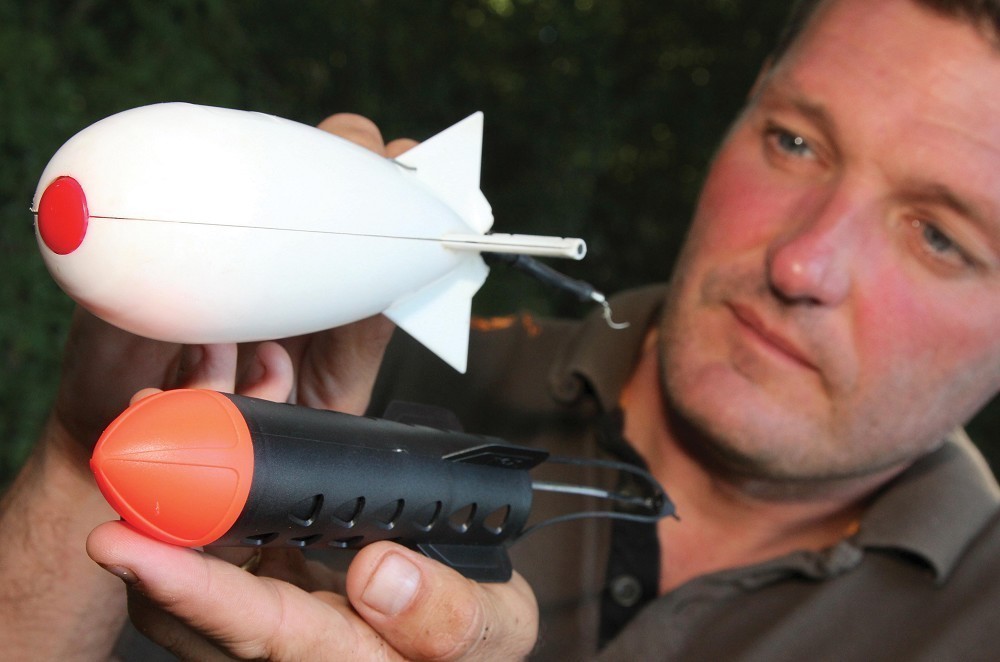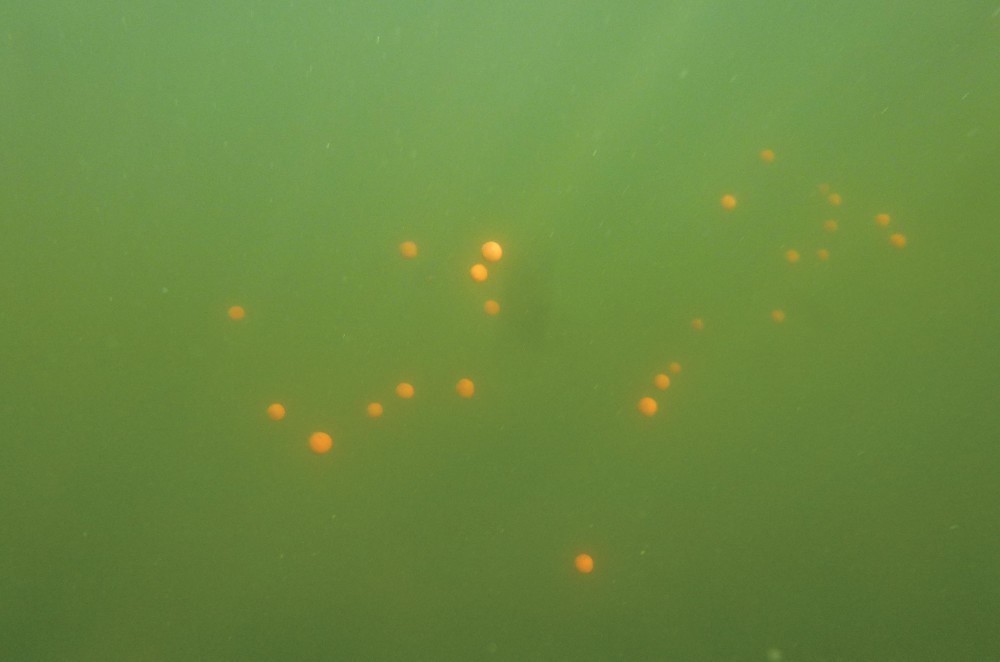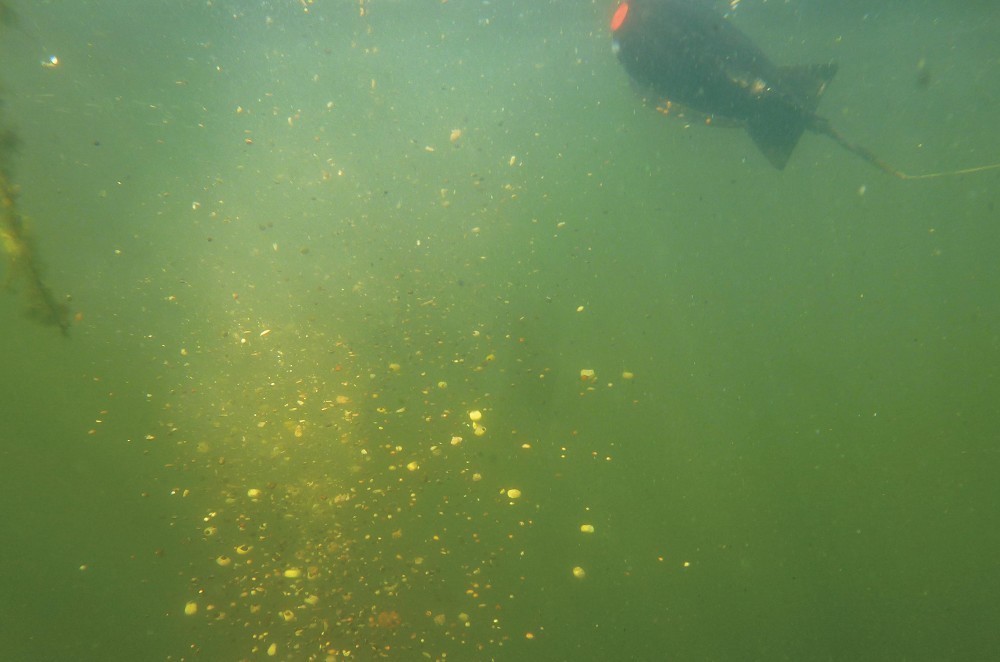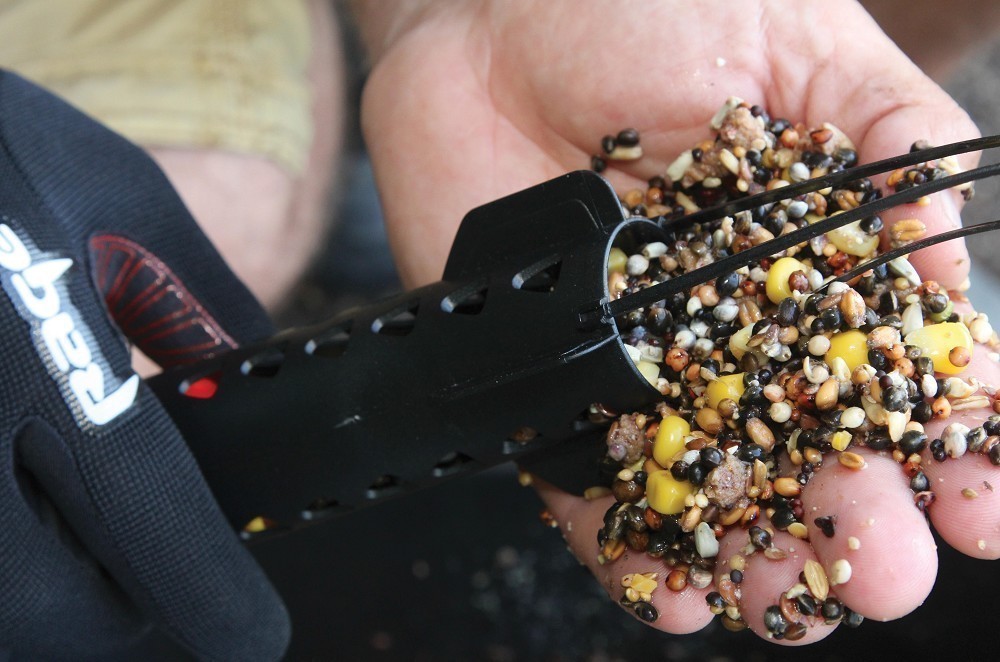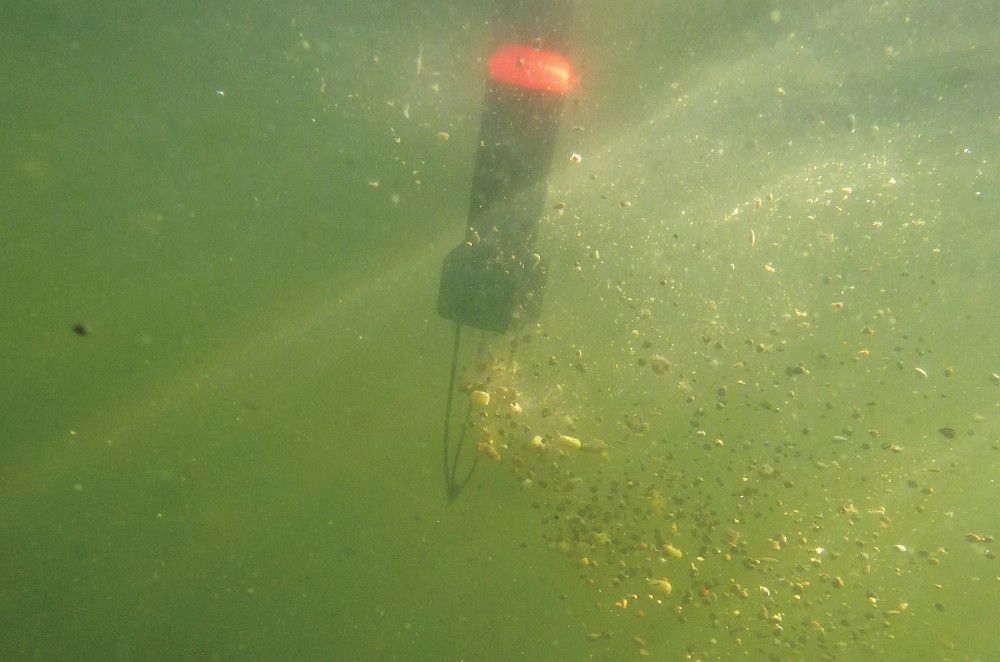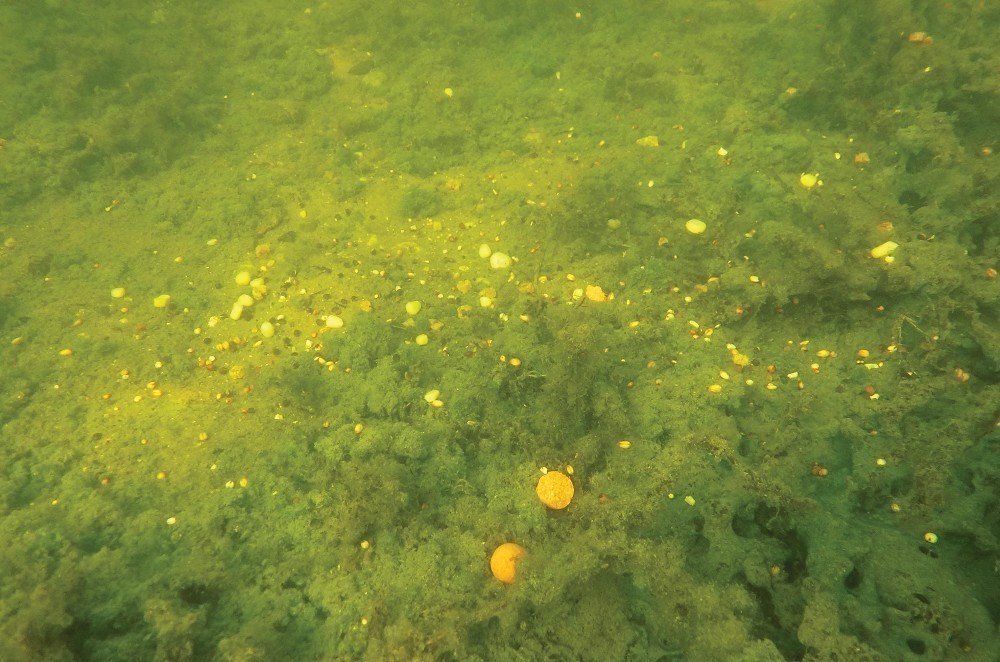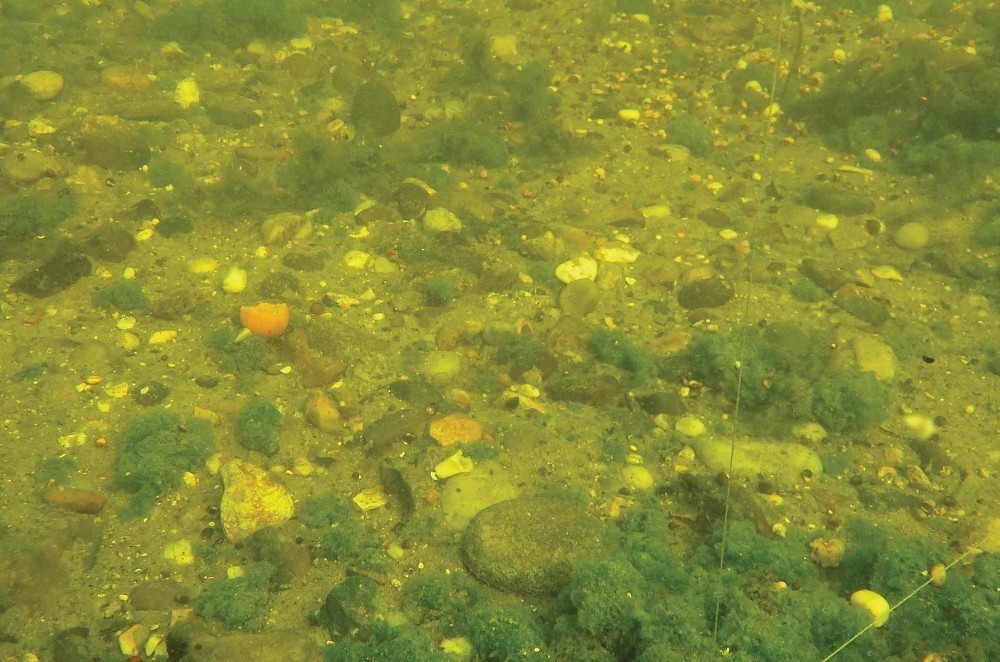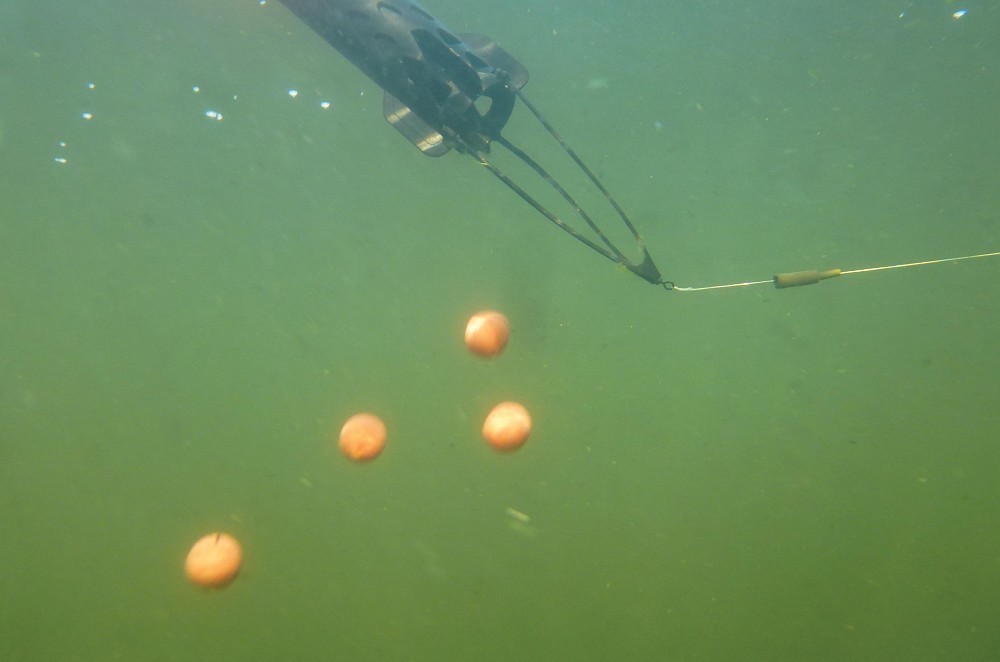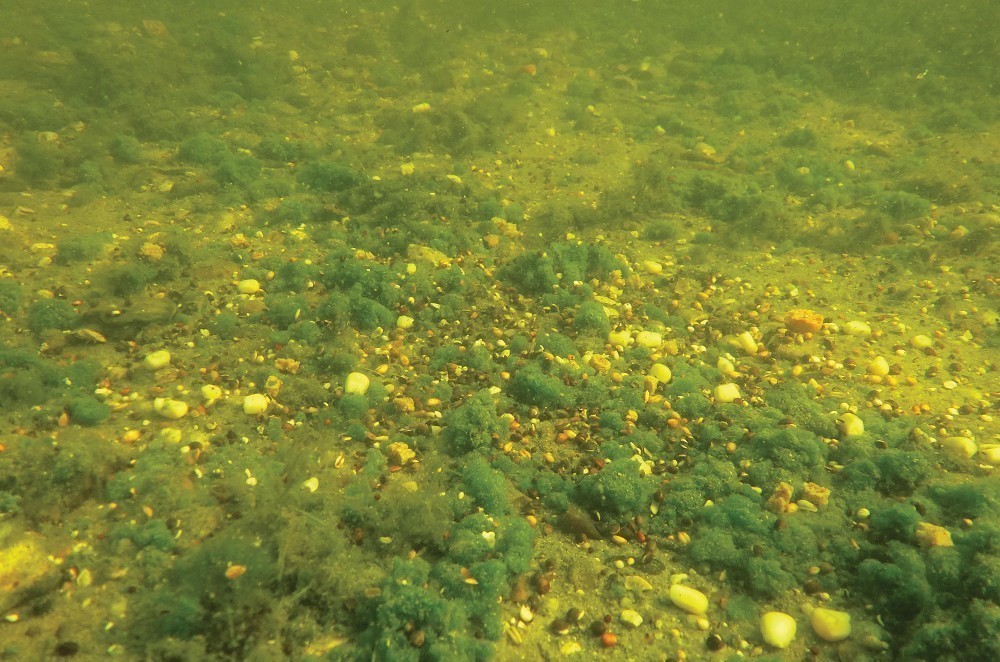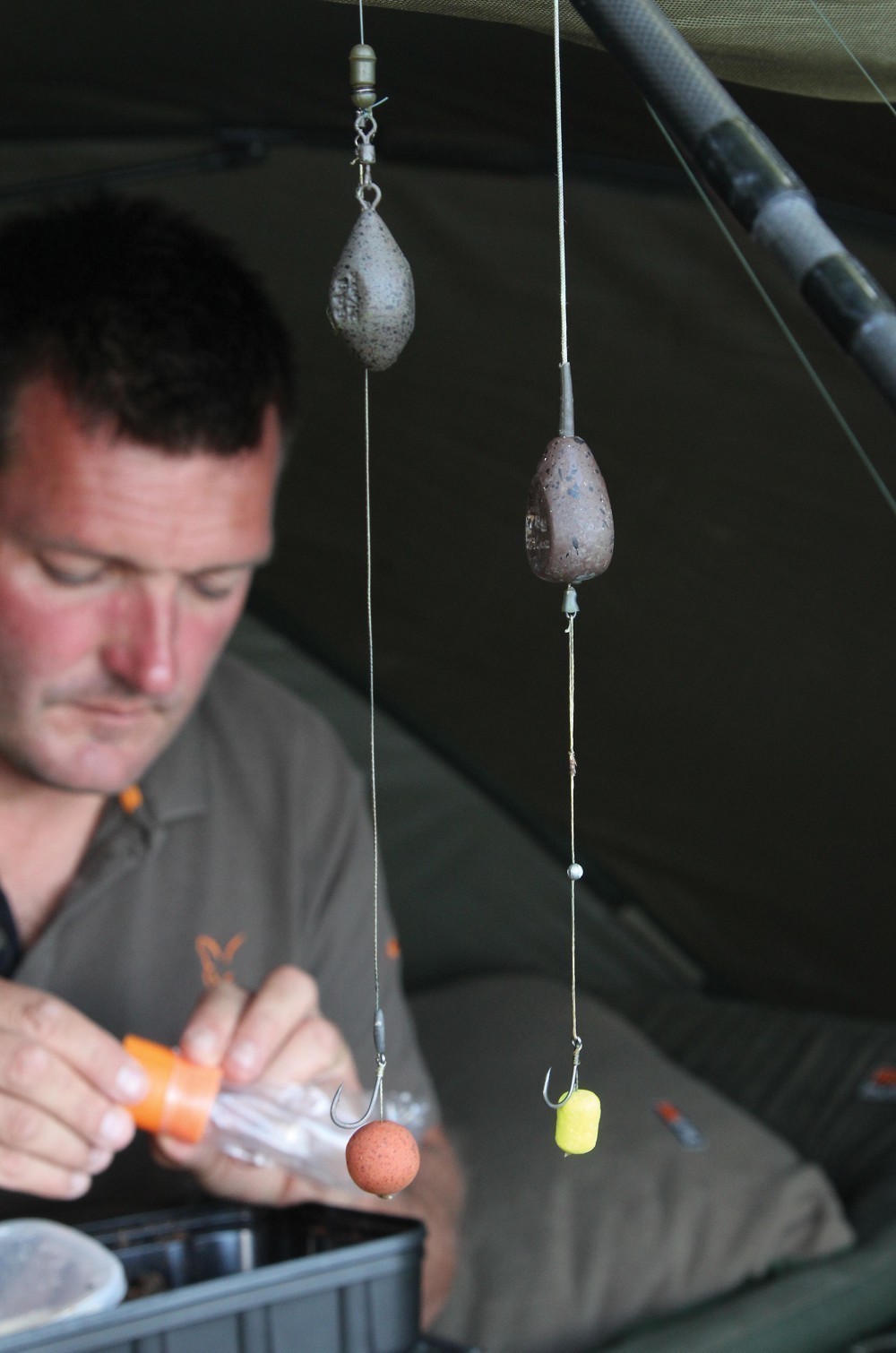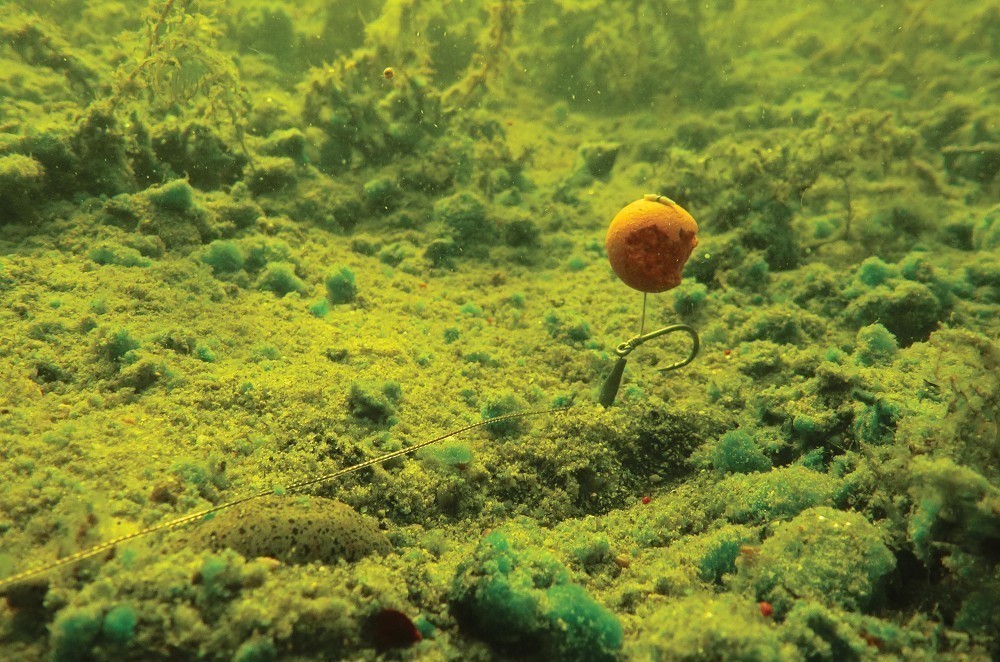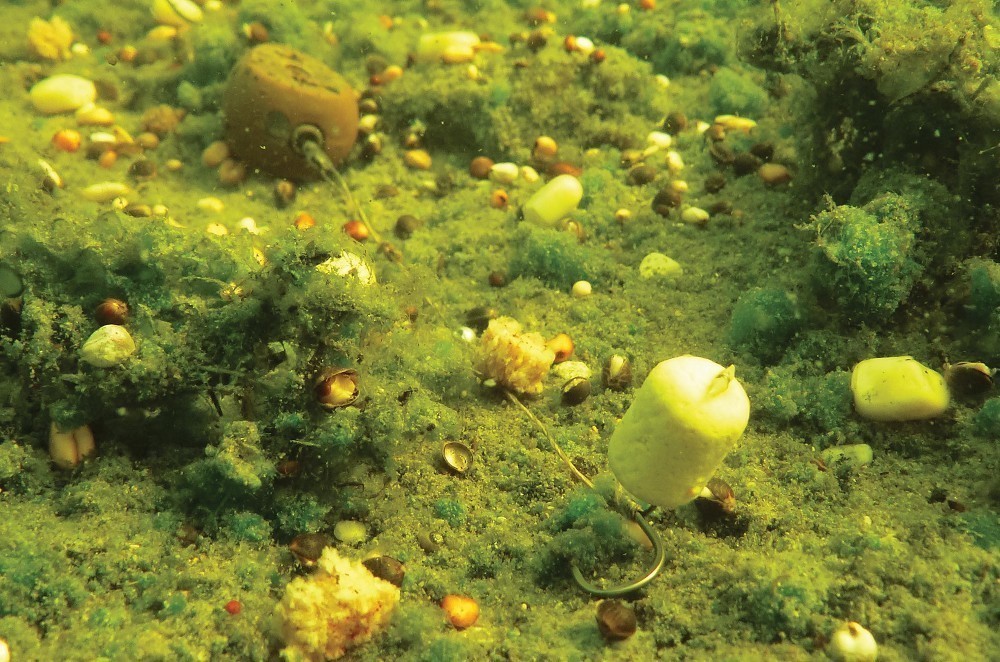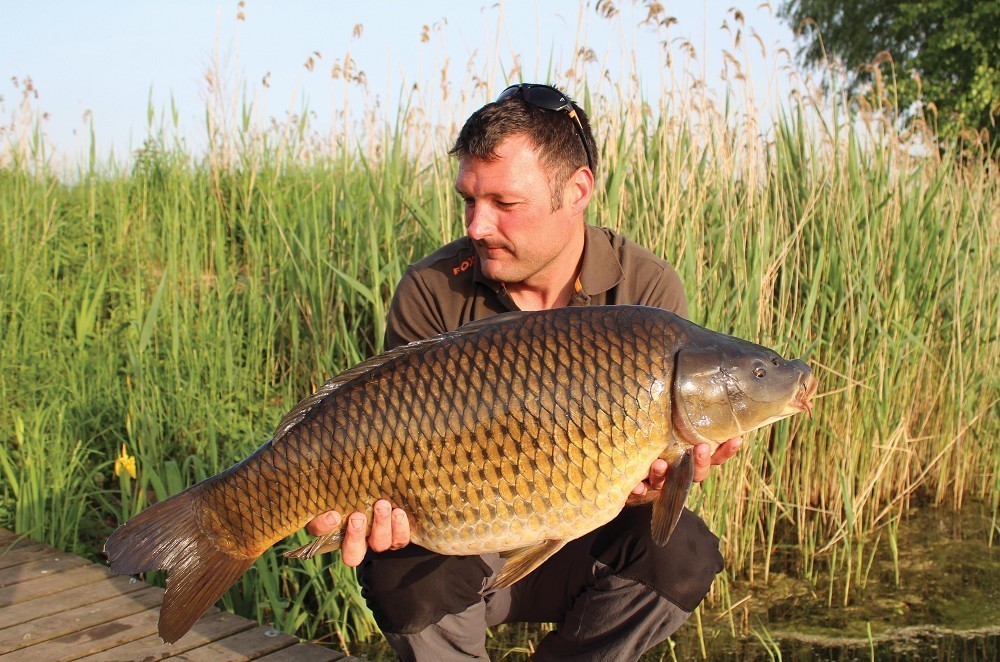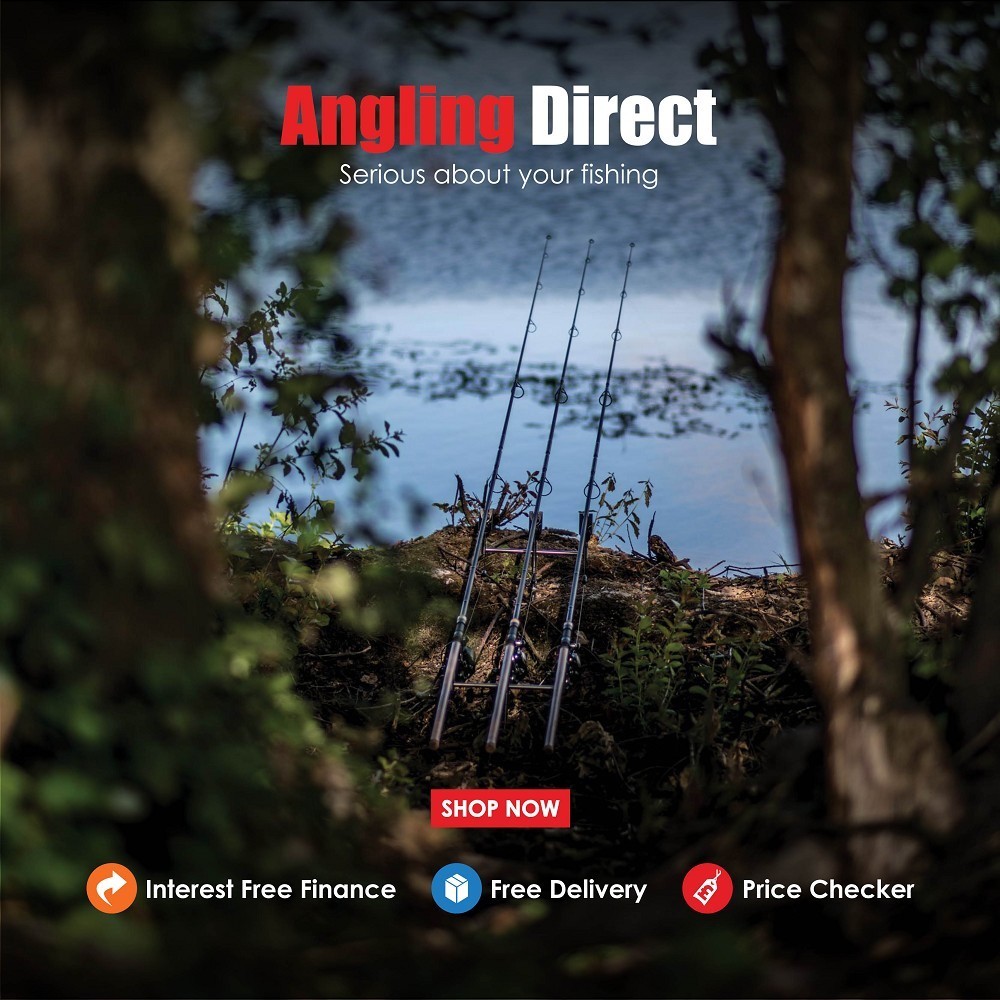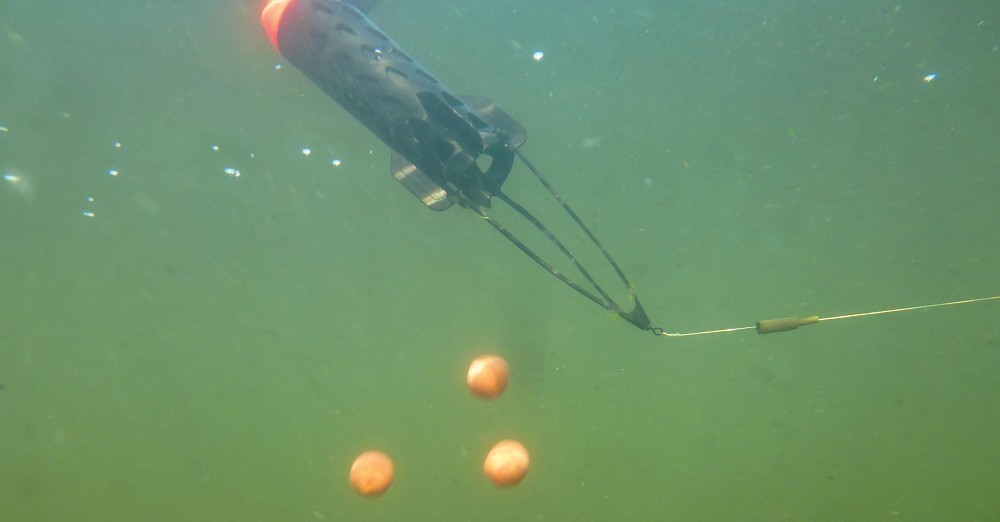
The underwater truth about spodding and Spombing
Rob Hughes helps you improve common carping methods by utilising his access to the underwater world!
So you want to spod? I don’t blame you - it’s a devastating method when done right! You’ve only got to look at the results of some of the country’s top spodders like Hewitt, Bartlett and Maker and the sheer numbers of fish they catch to see how effective it can be.
It’s rare that I go anywhere without my trusty spod rod and it’s a great way of getting an attractive area of bait around your hookbait - particularly on high stocked waters. In fact on some waters like Brasenose, Thorpe Lea, Shearwater and Drayton you could actually Spod plain water? The fish have got so used to the sound of the spod landing to mean feeding time that they will come in and have a look for food. In the past I have Spodded flavoured water (trust me it works) to get fish into the area and get them feeding.
However, as with any method, the experts make it look easy so I’d like to run through a few basics, as well as some underwater tips to help you catch more fish – and make the most of a devastating method!
The first thing you need is of course a decent spod rod, ideally a dedicated one that can take the extra load of a heavy spod. Don’t discount this, and I’m not trying to plug or push a particular rod here. A fully laden spod or Spomb can weigh up to 10oz and a normal rod will twist in a big cast and you’ll lose accuracy, which brings me to one of the other things you need to look at when spodding – a spod or Spomb to carry the bait.
Every time a loaded spod or Spomb hits the water it will discharge bait. If it’s flying all over the shop and landing anywhere you’re going to spread the fish around and if you ask any ‘bite angler’ that’s the worst thing you can do.
You want your bait pretty tight to get the best out of your spodding so practise your accuracy and also your casting technique. However, accuracy is subjective. I’ve heard loads of anglers talk abut spodding on a bin lid at 125 yards - but quite frankly that doesn’t happen. Not unless your bin lid is actually a skip sized bin!
When I’m in the water on a mark and watching even the most practised of spodders baiting-up, their bait very rarely lands in the same spot. We are anglers not darts players and we fish at distance. Add the wind, variables in the cast strength and force, as well as the tools you are using - if you can get an area of 12ft by 12ft baited, you are doing well. Obviously it’s easier at shorter distances but even there you will be surprised at how wide your baited area is. Bin lids don’t happen, unless you only put one spod out!
The worst thing you can do is regularly drop short of your chosen spot as you will be baiting along your main line’s route and that has the potential to give you liners and false indication or even worse cause the fish to move out of the area. Ideally use sticks to wrap your distance and clip-up to the correct spot. Your line clip is one of your most important tools when spodding because it allows you to get the distance right every time and also to lay the spod down with minimal disturbance.
When Spombing you have to get the knack right of hitting the clip then following through to allow the Spomb to nose-dive and open. If you’re finding it doesn’t then it means the Spomb is hitting the water tail or side first rather than nose-diving, which it needs to do to allow the spring clip inside to release.
Alternatively if you are finding the Spomb is opening part way through the cast it usually means that you have loaded it wrong and have got something caught in the mechanism at the front or more likely a grain of hemp or something in the fins at the back. Check it’s clean before you fire it out there.
Spods vs. Spombs
There’s a lot of discussion about spods versus Spombs and that one is better than the other. That’s a nonsense argument in my eyes as they deliver bait in very different ways and as such are different tools. You can make a hole in a wall with a drill but you can also make a hole with a bolster chisel and a hammer.
The Spomb tends to dump a pile of bait, especially boilies, into quite a condensed patch. A spod will slowly discharge the bait and if there is some surface drift it will spread over a slightly wider area when it reaches the bottom than a Spomb.
You may think that is at odds with one of my earlier comments about tight and accurate baiting, but if you think all of your bait is landing in exactly the same place on every cast you are sadly mistaken - whoever you are and however good you think you are.
Bait spreads as it falls through the water. Drift has an effect, as does how long you wait before you reel in. The taper on the spod makes a massive difference to speed it comes out and so does the type of bait you are using. There are plenty of factors that mean, even if your casts look bang on, your bait is not all landing in the same place.
Apart from the dumping difference between the two, there is another important issue. A Spomb will take considerably more bait than a spod, and in our recent tests we found that on average the spod took nine boilies whereas the Spomb could take twenty-nine. That’s over three times as many boilies, but after half a dozen casts you end up with a light scattering of boilie with a spod and a load of clumps with a Spomb.
It’s the same with particles. Unless you are piling in a whole bucket you will probably end up with a load of clumps on the bottom with a Spomb. However with a spod a lot of people make a very common mistake of not putting enough in. Half a dozen spods is nothing, particularly if you have any groundbait or dust in the mix. It looks good in the bucket, but when it enters the pond it floats off or dissolves and only the heavy stuff sinks.
If you want to see how much bait your spod is really putting into the pond, fill it up, take a quarter off for spod spill, then tip the rest into a sieve and wash it off. The solid that you are left with is the stuff that makes it to the bottom, and when you add in that it spreads out because of drift, you’ve got a very light scattering on the bottom.
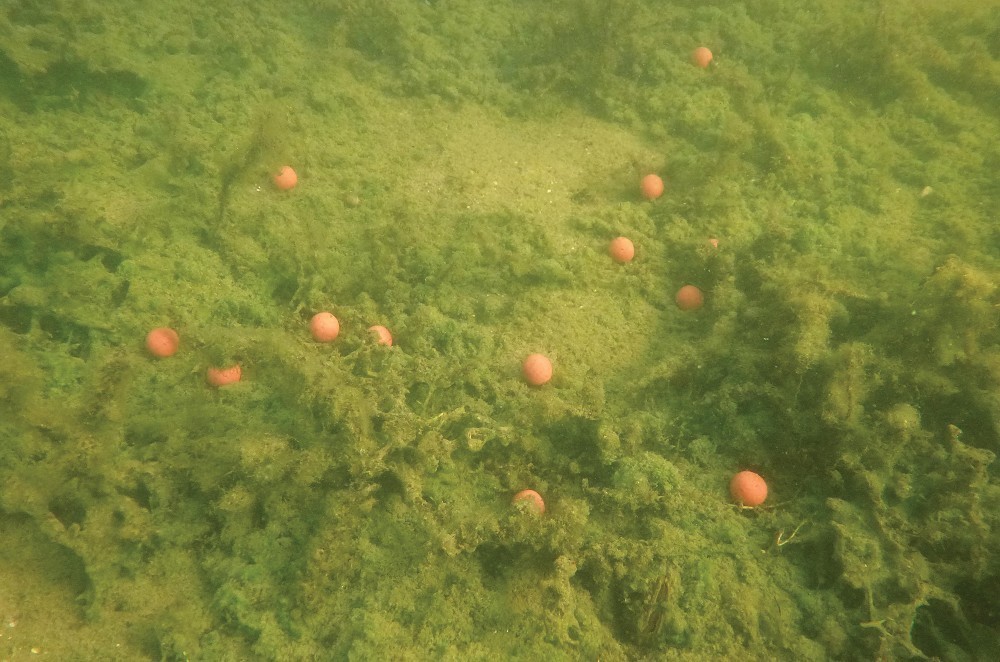 On the bottom the Spombed boilies end up in a tight group. I like to add three of four Spombs then a light spread with a stick
On the bottom the Spombed boilies end up in a tight group. I like to add three of four Spombs then a light spread with a stick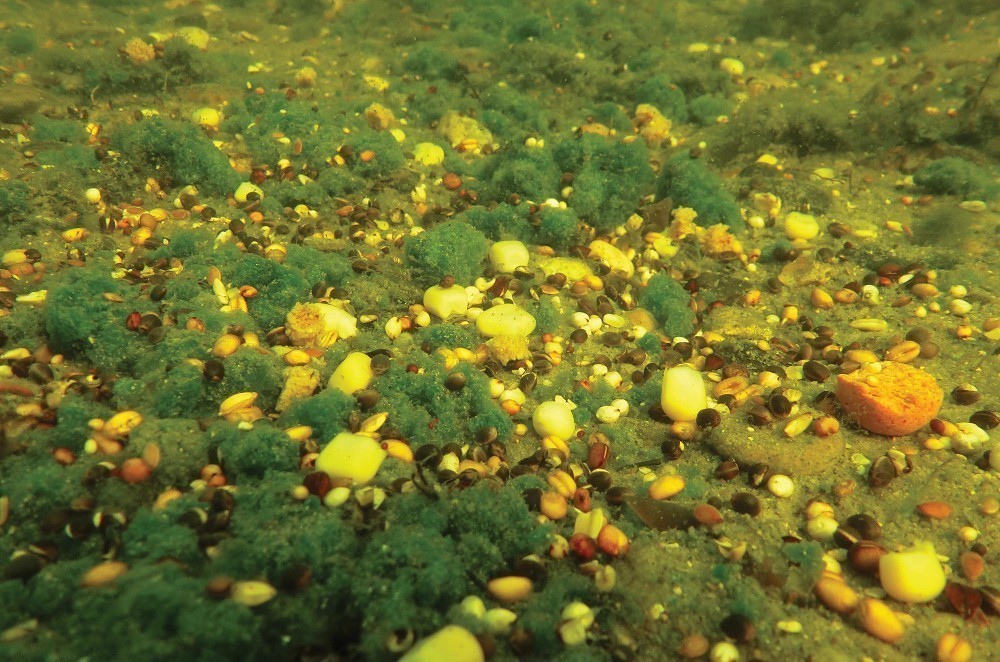 A Spomb dump gives a much tighter patch of particle than a spod. With a few Spombs you get clumps rather than spread
A Spomb dump gives a much tighter patch of particle than a spod. With a few Spombs you get clumps rather than spread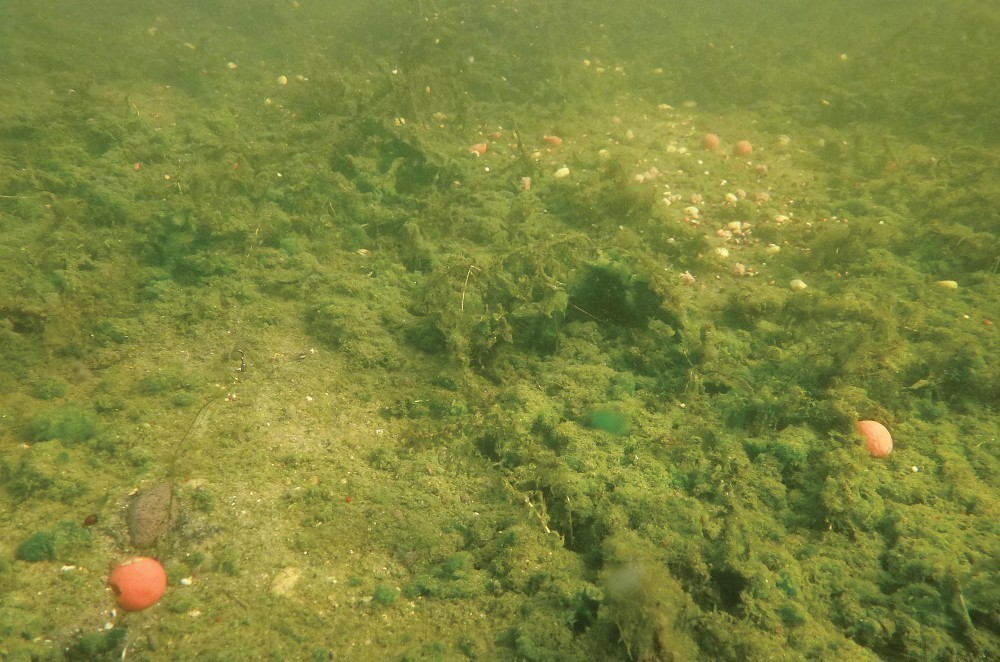 A scattering of boilies from the stick or catty adds to the spread - as the hookbait may not always fall on the spodded patch
A scattering of boilies from the stick or catty adds to the spread - as the hookbait may not always fall on the spodded patchAs a very loose rule of thumb I always say that you should put three times as many spods in as you think to achieve the effect that you think you are getting. So if you think six spods is the type of bait spread you want, put eighteen in to achieve it!
Decide what you want to achieve on the bottom and use the correct tool for the job. For me, although it takes a bit more effort, I like to use a mixture of the two and I tend to create the base of my area with a few dumps of Spomb, as tight as I can make them. Then I’ll put in twice as many spods in the same area to hopefully link-up the clumps.
That way there is more chance of my hookbait landing on the dance floor rather than dropping between clumps. I’ll then either catty or stick a few boilies loosely over the area once again to fill in the gaps and create a link between the spots, particularly if I am just fishing boilies
Hughesy's Mix
Almost all of my mixes, whether for Zigging or bottom fishing, start off with 50% parti-blend as the main ingredient. If I’m putting a lot in then it’s ideal as it’s cheap, easy to prepare, and carp love it. It sinks to create a carpet of feed, but also gets hit on the way down by mid water feeders if I want to use a Zig. Crack it with boiling water first then cover it with water by about a cm. When it’s soaked up all the water it’s ready to go.
I also add 25% hemp and 25% corn and that forms the basis of the mix. Simple I know, but most of the time you don’t need to complicate things. There are occasions when I’ll just use hemp and corn, and others when it will be hemp and luncheon meat, but for ‘bog standard spodding’ then that’s my mix.
The only other additions are when fishing on the bottom I like to put some broken and whole boilies into the wet mix.
Be aware though, if you are Zigging that you need to be active. I’ve sat underwater with people spodding over the top of me on a number of occasions and whilst a cloud looks like it lingers for a long time, in reality the small fish like roach muller the bits and the cloud soon disappears.
After about five minutes there is no cloud left and once that goes, so does the excitement. As a rule of thumb, put two or three in every five minutes, but once again be accurate, especially when spodding over Zigs as you do not want a mid water shoal moving off you.
Rigs for particle baiting
Unlike a lot of anglers I like to vary the hookbaits on the spot. After all, you don’t really know what they are feeding on so I don’t actually want all my eggs in one basket until I know which basket the fish want! Everything that swims loves corn hence the reason that there is usually at least a kilo in each bucket of bait I make-up.
So a lot of the time I will fish a short rig with plastic corn in a bag or a yellow balanced wafter on the bottom to mimic the corn offerings. With this rod it’s important to get it on the baited area, which is why I like to use the Spomb/spod combo to get a nice spread rather than just clumps. The other rod will be a boilie presentation, as a larger offering that is not part of the particle spread. Using this in conjunction with a few boilies in the mix and also a few handfuls sticked out to the same area means that there is going to be random baits dotted all over the target zone.
The spod/Spomb application gives clumps of boilie, so to increase the randomness the stick addition works really well. Rig wise I like a helicopter/rotary set-up to avoid tangles and this is the usual rig I use for boilie fishing. Eight inches of Matt Coretex and a size 4 SSBP hook does the job perfectly and I know that the rig will be well presented and ready for action if called upon.
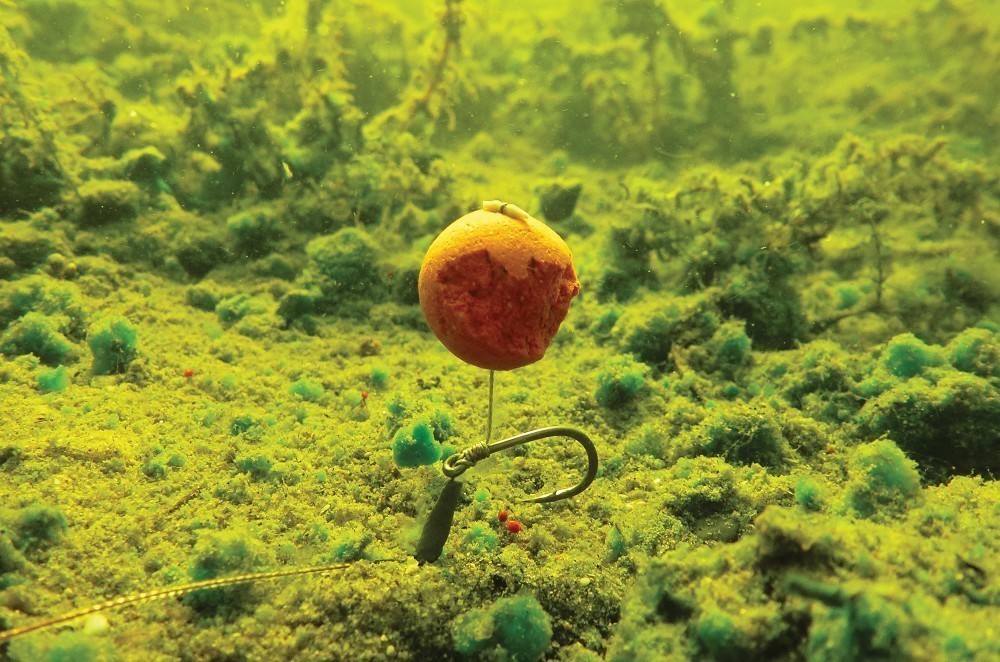 A close-up of my chosen boilie rig for this spot. If it was perfectly clean it would be a straight bottom bait on the same rig
A close-up of my chosen boilie rig for this spot. If it was perfectly clean it would be a straight bottom bait on the same rig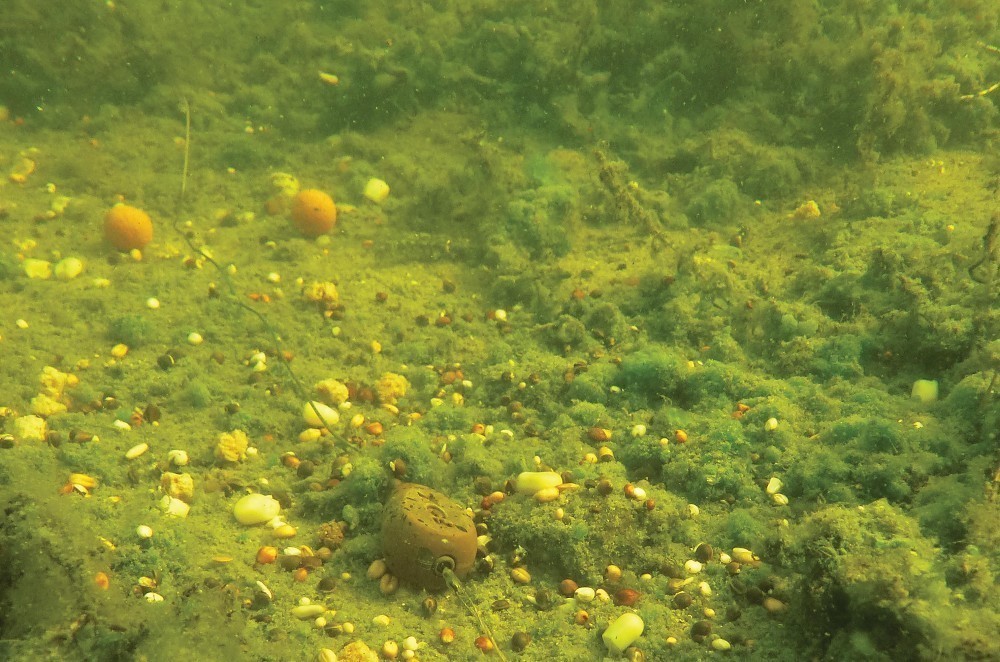 The second bait will be a yellow balanced bottom bait to mimic corn and I try to get this in the patch
The second bait will be a yellow balanced bottom bait to mimic corn and I try to get this in the patchSummary
We’re still just in spodding time at the moment so get the spod rod out and fill it in. In fact apart from the bleak mid winter it’s almost always spodding time of some sort, you just need to change the mix that you are spodding out to suit where the fish want to feed and how much they want.
Very soon, as the colour drops out of the water and the frosts start the rapid cooling of the water, it will be maggot time. To get them out effectively you need to spod or Spomb. So get practising now as maggots need to be fished even tighter than a normal spod approach.
Following winter and as spring approaches again we’re back to spodding over Zigs and eventually coming full circle to spodding particles through the warmer months. Whether up in the water or down on the deck - whatever your choice, the spod is an incredible weapon that will put fish on the bank and if it’s done right, plenty of them.



